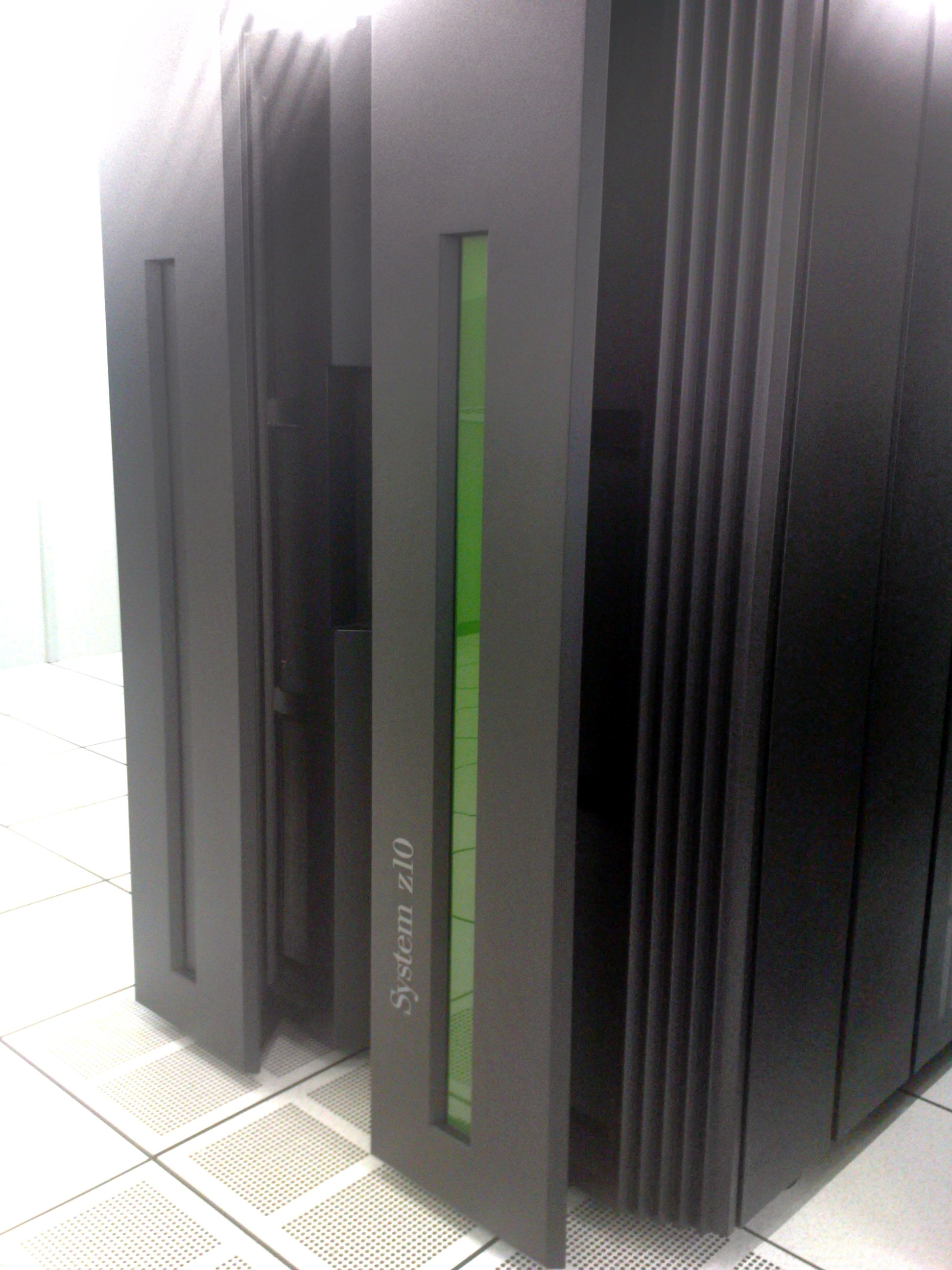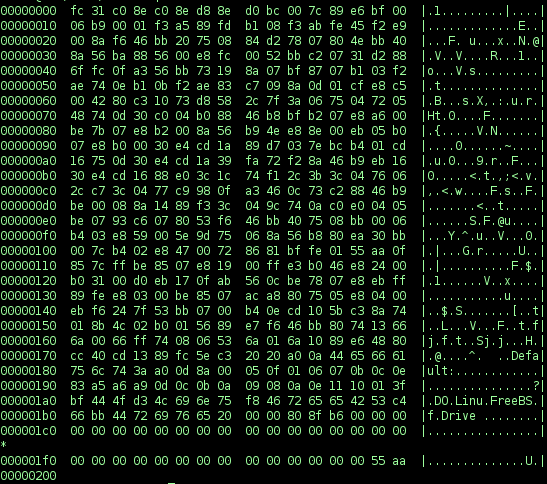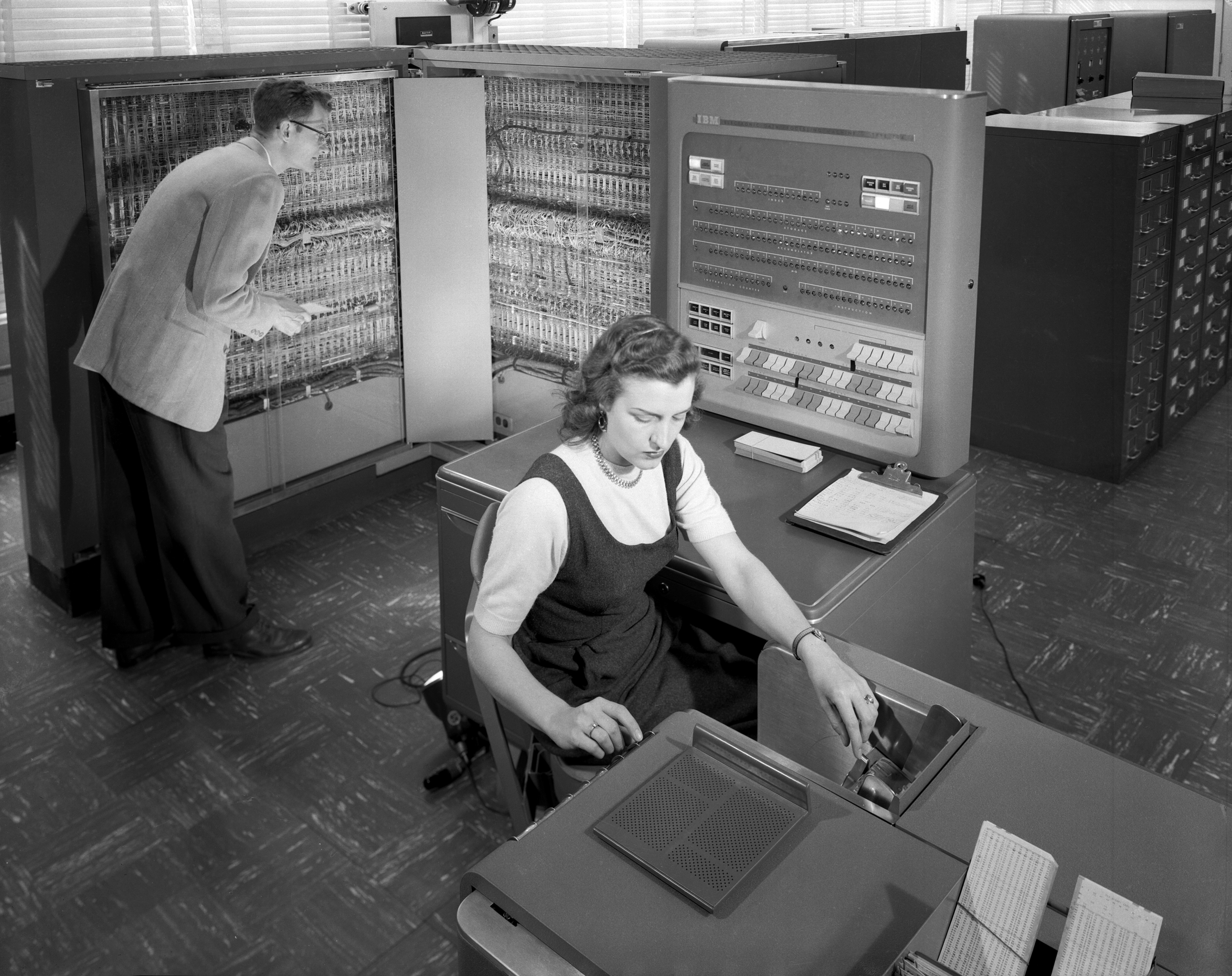|
CLIST
CLIST (Command List) (pronounced "C-List") is a procedural programming language for TSO in MVS systems. It originated in OS/360 Release 20 and has assumed a secondary role since the availability of Rexx in TSO/E Version 2. The term CLIST is also used for command lists written by users of NetView. In its basic form, a CLIST program (or "CLIST" for short) can take the form of a simple list of commands to be executed in strict sequence (like a DOS batch file (*.bat) file). However, CLIST also features If-Then-Else logic as well as loop constructs. CLIST is an interpreted language. That is, the computer must translate a CLIST every time the program is executed. CLISTs therefore tend to be slower than programs written in compiled languages such as COBOL, FORTRAN, or PL/1. (A program written in a compiled language is translated once to create a "load module" or executable.) CLIST can read/write MVS files and read/write from/to a TSO terminal. It can read parameters from th ... [...More Info...] [...Related Items...] OR: [Wikipedia] [Google] [Baidu] [Amazon] |
Rexx
Rexx (restructured extended executor) is a high-level programming language developed at IBM by Mike Cowlishaw. Both proprietary and open-source software, open source Rexx interpreter (computing), interpreters exist for a wide range of computing platforms, and compilers exist for IBM mainframe computers. Rexx is used for scripting language, scripting, application software, application macro (computer science), macros and Software development, application development. As a general purpose scripting language, Rexx is considered a precursor to Tcl and Python (programming language), Python. Rexx is supported in a variety of environments. It is the primary scripting language in some operating systems including OS/2, MVS, VM (operating system), VM, AmigaOS and is used for macros in some software including SPF/PC, XEDIT#PC and Unix adaptations, KEDIT, The Hessling Editor, THE and ZOC (software), ZOC. With an engine installed, Rexx can be used for scripting and macros in programs that ... [...More Info...] [...Related Items...] OR: [Wikipedia] [Google] [Baidu] [Amazon] |
Time Sharing Option
Time Sharing Option (TSO) is an interactive time-sharing environment for IBM mainframe operating systems, including OS/360 MVT, OS/VS2 (SVS), MVS, OS/390, and z/OS. Use In computing, time-sharing is a design technique that allows many people to use a computer system concurrently and independently—without interfering with each other. Each TSO user is isolated; it appears to each one that they are the only user of the system. TSO is most commonly used by mainframe system administrators and programmers. It provides: * A text editor * Batch job support, including completion notification * Debuggers for some programming languages used on System/360 and later IBM mainframes * Support for other vendors' end-user applications, for example for querying IMS and DB2 databases TSO interacts with users in either a line-by-line mode or in a full screen, menu-driven mode. In the line-by-line mode, the user enters commands by typing them in at the keyboard; in turn, the system interp ... [...More Info...] [...Related Items...] OR: [Wikipedia] [Google] [Baidu] [Amazon] |
ISPF
In computing, Interactive System Productivity Facility (ISPF) is a software product for many historic IBM mainframe operating systems and currently the z/OS and z/VM operating systems that run on IBM mainframes. It includes a Text editor, screen editor, the user interface of which was emulated by some microcomputer editors sold commercially starting in the late 1980s, including SPF/PC. ISPF primarily provides an IBM 3270 terminal Interface (computer science), interface with a set of panel (computer software), panels. Each panel may include menus and dialogs to run tools on the underlying environment, e.g., Time Sharing Option (TSO). Generally, these panels just provide a convenient interface to do tasks—most of them execute modules of IBM mainframe utility programs to do the actual work. ISPF is frequently used to manipulate z/OS data set (IBM mainframe), data sets via its Program Development Facility (ISPF/PDF). ISPF is user-extensible and it is often used as an application p ... [...More Info...] [...Related Items...] OR: [Wikipedia] [Google] [Baidu] [Amazon] |
Z/OS
z/OS is a 64-bit operating system for IBM z/Architecture mainframes, introduced by IBM in October 2000. It derives from and is the successor to OS/390, which in turn was preceded by a string of MVS versions.Starting with the earliest: * OS/VS2 Release 2 through Release 3.8 * MVS/System Extensions (MVS/SE) * MVS/System Product (MVS/SP) Version 1 * MVS/System Product Version 2 (MVS/Extended Architecture, MVS/XA) * MVS/System Product Version 3 (MVS/Enterprise Systems Architecture, MVS/ESA) * MVS/ESA SP Version 4 * MVS/ESA SP Version 5 Like OS/390, z/OS combines a number of formerly separate, related products, some of which are still optional. z/OS has the attributes of modern operating systems but also retains much of the older functionality that originated in the 1960s and is still in regular use—z/OS is designed for backward compatibility. Major characteristics z/OS supportsSome, e.g., TSO/E, are bundled with z/OS, others, e.g., CICS, are separately priced. stable ... [...More Info...] [...Related Items...] OR: [Wikipedia] [Google] [Baidu] [Amazon] |
Job Control Language
Job Control Language (JCL) is a scripting language used on IBM mainframe operating systems to instruct the system on how to run a batch processing, batch job or start a subsystem. The purpose of JCL is to say which programs to run, using which files or devices for input or output, and at times to also indicate under what conditions to skip a step. Parameters in the JCL can also provide accounting information for tracking the resources used by a job as well as which machine the job should run on. There are two distinct IBM Job Control Languages: * one for the operating system lineage that begins with DOS/360 and whose latest member is z/VSE; and * the other for the lineage from OS/360 to z/OS, the latter now including Job Entry Subsystem 2/3, JES extensions, #Job Entry Control Language, Job ''Entry'' Control Language (JECL). They share some basic syntax rules and a few basic concepts, but are otherwise very different. The VM (operating system), VM operating system does not have ... [...More Info...] [...Related Items...] OR: [Wikipedia] [Google] [Baidu] [Amazon] |
Procedural Programming
Procedural programming is a programming paradigm, classified as imperative programming, that involves implementing the behavior of a computer program as Function (computer programming), procedures (a.k.a. functions, subroutines) that call each other. The resulting program is a series of steps that forms a hierarchy of calls to its constituent procedures. The first major procedural programming languages appeared –1964, including Fortran, ALGOL, COBOL, PL/I and BASIC. Pascal (programming language), Pascal and C (programming language), C were published –1972. Computer processors provide hardware support for procedural programming through a stack register and instructions for Subroutine#Jump to subroutine, calling procedures and returning from them. Hardware support for other types of programming is possible, like Lisp machines or Java processors, but no attempt was commercially successful. Development practices Certain software development practices are often employed with ... [...More Info...] [...Related Items...] OR: [Wikipedia] [Google] [Baidu] [Amazon] |
Executable
In computer science, executable code, an executable file, or an executable program, sometimes simply referred to as an executable or binary, causes a computer "to perform indicated tasks according to encoded instruction (computer science), instructions", as opposed to a data (computing), data file that must be interpreted (parser, parsed) by an interpreter (computing), interpreter to be functional. The exact interpretation depends upon the use. "Instructions" is traditionally taken to mean machine code instructions for a physical central processing unit, CPU. In some contexts, a file containing scripting instructions (such as bytecode) may also be considered executable. Generation of executable files Executable files can be hand-coded in machine language, although it is far more convenient to develop software as source code in a high-level language that can be easily understood by humans. In some cases, source code might be specified in assembly language instead, which rema ... [...More Info...] [...Related Items...] OR: [Wikipedia] [Google] [Baidu] [Amazon] |
Command Shells
An operating system shell is a computer program that provides relatively broad and direct access to the system on which it runs. The term ''shell'' refers to how it is a relatively thin layer around an operating system. A shell is generally a command-line interface (CLI) program although some graphical user interface (GUI) programs are arguably classified as shells too. Overview Operating systems provide various services to their users, including file management, process management (running and terminating applications), batch processing, and operating system monitoring and configuration. Most operating system shells are not ''direct'' interfaces to the underlying kernel, even if a shell communicates with the user via peripheral devices attached to the computer directly. Shells are actually special applications that use the kernel API in just the same way as it is used by other application programs. A shell manages the user–system interaction by prompting users for ... [...More Info...] [...Related Items...] OR: [Wikipedia] [Google] [Baidu] [Amazon] |
Procedural Programming Languages
Procedural programming is a programming paradigm, classified as imperative programming, that involves implementing the behavior of a computer program as Function (computer programming), procedures (a.k.a. functions, subroutines) that call each other. The resulting program is a series of steps that forms a hierarchy of calls to its constituent procedures. The first major procedural programming languages appeared –1964, including Fortran, ALGOL, COBOL, PL/I and BASIC. Pascal (programming language), Pascal and C (programming language), C were published –1972. Computer processors provide hardware support for procedural programming through a stack register and instructions for Subroutine#Jump to subroutine, calling procedures and returning from them. Hardware support for other types of programming is possible, like Lisp machines or Java processors, but no attempt was commercially successful. Development practices Certain software development practices are often employed with ... [...More Info...] [...Related Items...] OR: [Wikipedia] [Google] [Baidu] [Amazon] |
IBM Mainframe Operating Systems
International Business Machines Corporation (using the trademark IBM), nicknamed Big Blue, is an American multinational technology company headquartered in Armonk, New York, and present in over 175 countries. It is a publicly traded company and one of the 30 companies in the Dow Jones Industrial Average. IBM is the largest industrial research organization in the world, with 19 research facilities across a dozen countries; for 29 consecutive years, from 1993 to 2021, it held the record for most annual U.S. patents generated by a business. IBM was founded in 1911 as the Computing-Tabulating-Recording Company (CTR), a holding company of manufacturers of record-keeping and measuring systems. It was renamed "International Business Machines" in 1924 and soon became the leading manufacturer of punch-card tabulating systems. During the 1960s and 1970s, the IBM mainframe, exemplified by the System/360 and its successors, was the world's dominant computing platform, with the company p ... [...More Info...] [...Related Items...] OR: [Wikipedia] [Google] [Baidu] [Amazon] |
OS/390
OS/390 is an IBM operating system for the System/390 IBM mainframe computers. Overview OS/390 was introduced in late 1995 in an effort to simplify the packaging and ordering for the key, entitled elements needed to complete a fully functional Multiple Virtual Storage (MVS) operating system package. These elements included, but were not limited to: *Data Facility Storage Management Subsystem Data Facility Product (DFP)Provides access methods to enable I/O to, e.g., Direct access storage device subsystems, printers, tape; provides utilities and program management * Job Entry Subsystem (JES)Provides the ability to submit batch work and manage print * IBM Communications ServerProvides Virtual Telecommunications Access Method (VTAM) and TCP/IP communications protocols An additional benefit of the OS/390 packaging concept was to improve reliability, availability and serviceability (RAS) for the operating system, as the number of different combinations of elements that a custome ... [...More Info...] [...Related Items...] OR: [Wikipedia] [Google] [Baidu] [Amazon] |



